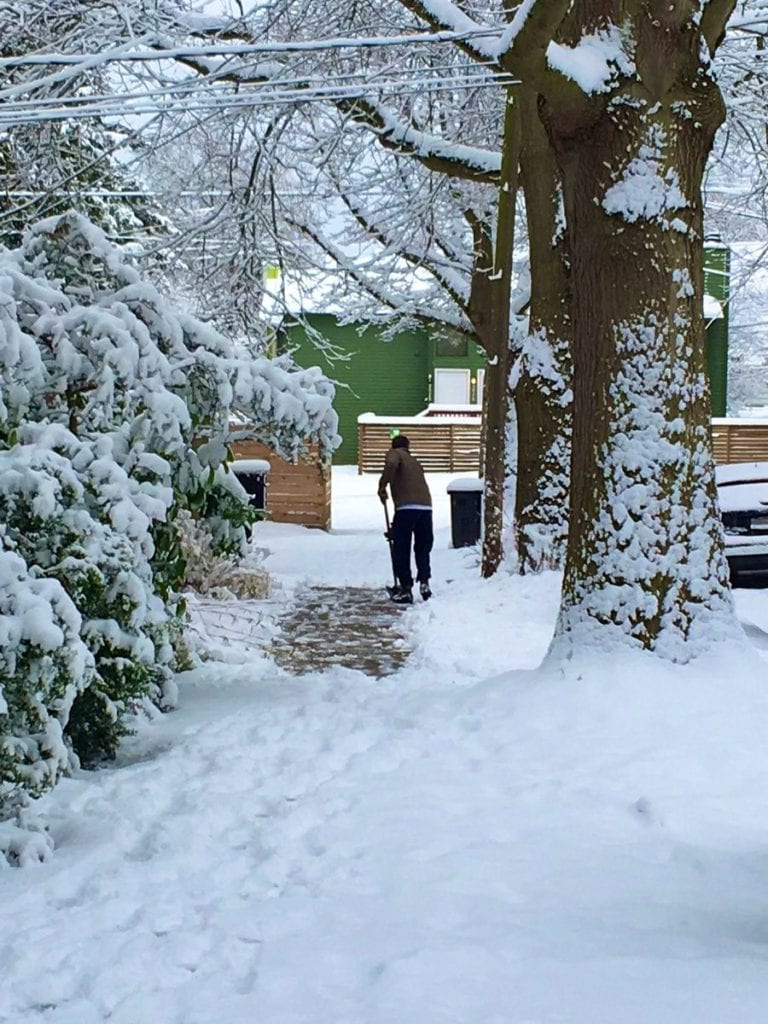
4 days. 7 days. 3 weeks.
That’s how long it was before Bruce, Laura, and Neve could safely leave their respective homes after last year’s snowstorms. We partnered with Rooted in Rights to share their experience.
Remember that old GI Joe life quote, “knowing is half the battle”? The other half is, now that we all know, what are we going to do about it? For many when it snows, using the sidewalks is the best way to get around. Everyone uses sidewalks but for people with disabilities, it’s crucial. If they’re not cleared. They’re stuck.
We’re counting on everyone to help clear their sidewalks of snow & ice next to their homes, businesses, & job sites to help keep everyone in our communities safe & moving.
In Seattle, it’s the legal responsibility of businesses, contractors, and residents to care for sidewalks and other elements of the right-of-way next to private properties and job sites in a timely manner.
If you haven’t already, now is the best time to buy a snow shovel, deicers, tire chains, & any other winter equipment you need.
Last year, many residents were unprepared for snow, and stores sold out of shovels and road salt. Snow should be cleared within 12 hours after snowfall ends, and as the snow melts, you should keep an eye out for icy patches and other hazards that may form. Make sure that the cleared path is at least 36 inches wide so that people with mobility aids like wheelchairs can get around too.
When you clear your sidewalk, make sure that the storm drains are clear of any snow and ice. If melted snow can’t drain, it can form puddles which can refreeze overnight. If you see a curb ramp that hasn’t been cleared yet, pitch in to help your community stay safe and moving.

For more information on preparedness for winter storms and climate disasters, check out Take Winter by Storm and What to do to Make it Through. Take a look at our blog post Winter is Coming, But You Can Take It By Storm for more preparation tips!
We can’t be everywhere at once. With over 2,400 miles of sidewalk in Seattle, we depend on the public to do their part & clear the sidewalks in front of their homes & businesses.
During a severe storm, our crews are working 24/7 to clear the city’s most critical streets for buses and emergency services. We’re also responding to public reports of hazardous sidewalk conditions and shoveling sidewalks that aren’t near privately-owned buildings including 30 outdoor stairways, dozens of pedestrian overpasses, and approximately 1,200 curb ramps.
Last February, Seattle experienced the worst snowstorm in 50 years. Around 350 city workers worked around the clock for nine days in a row to keep the roads & sidewalks clear.
We’ve learned a lot from those experiences, and we’ve included the lessons we’ve learned in our updated Winter Response Plan.
Our snow and ice plan includes keeping major streets open and passable—to the greatest extent possible—within 12 hours of a lull in a storm. Our goal is to ensure that the city is up and running as soon as possible following inclement weather, and we aim to secure access to important places like hospitals and grocery stores as quickly as we can.
Unfortunately, we do not have the resources to prioritize sidewalks, driveways, entryways, and parking lots, but these are important parts of the public right-of-way, so we need your help to clear them!
